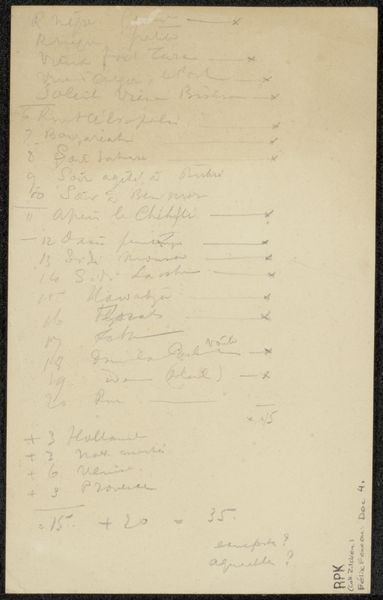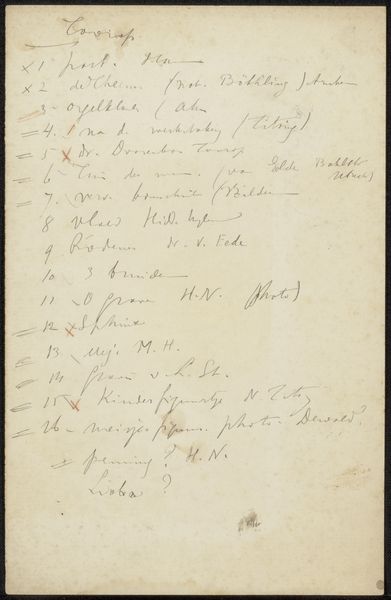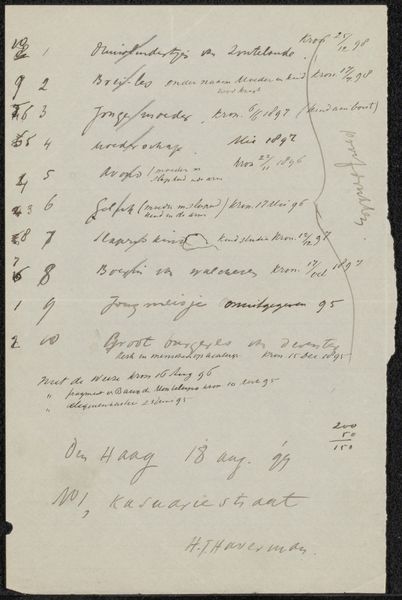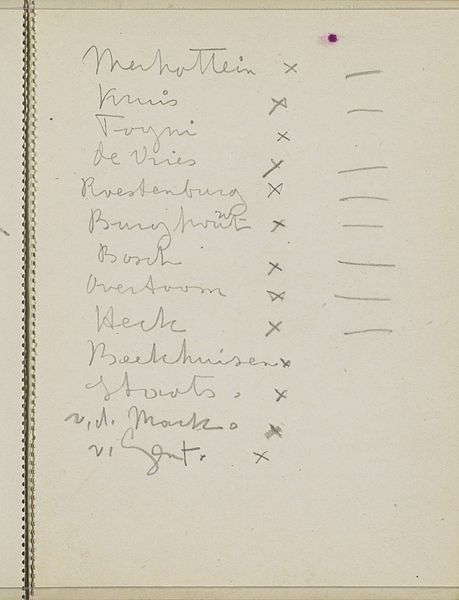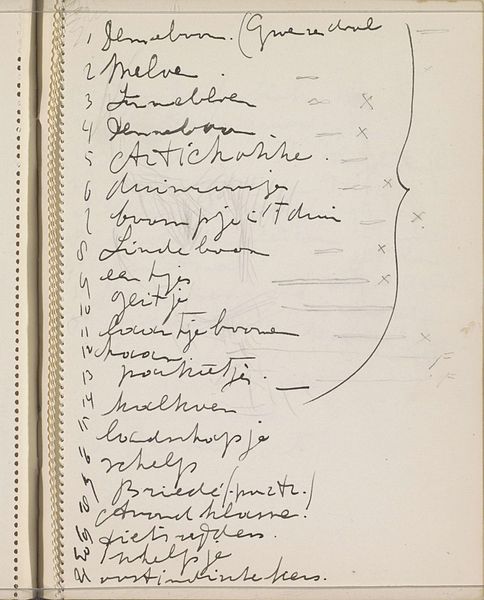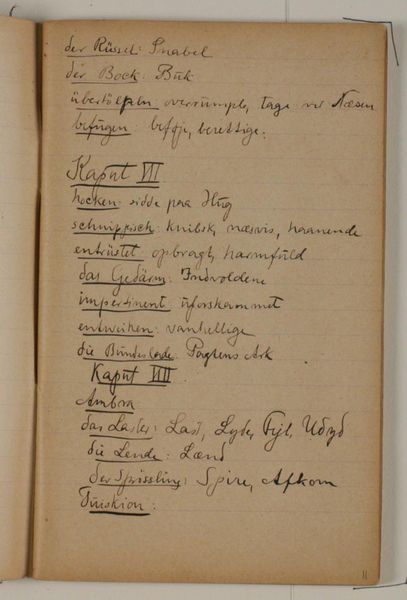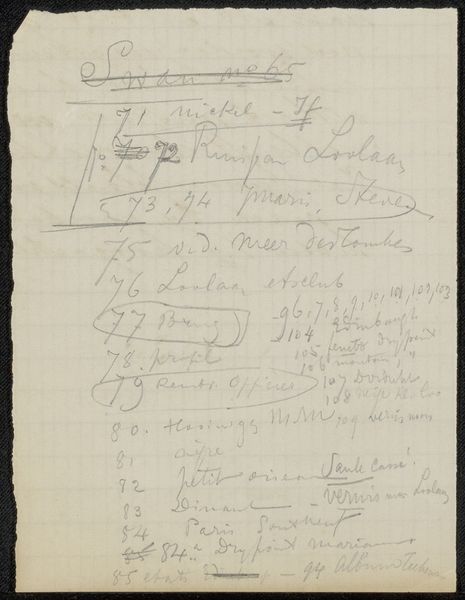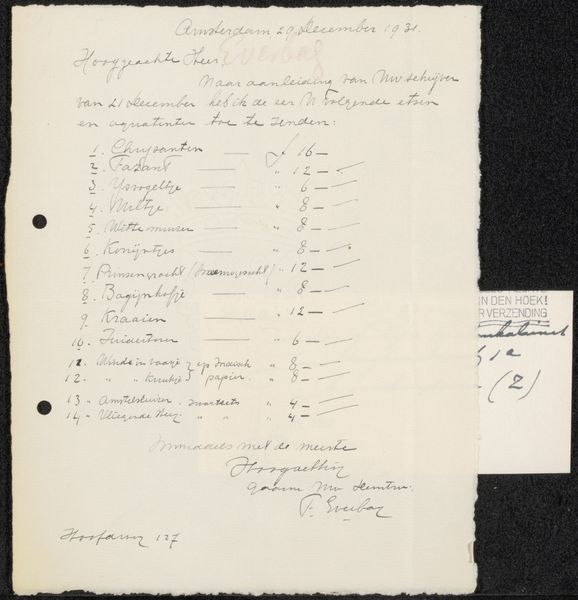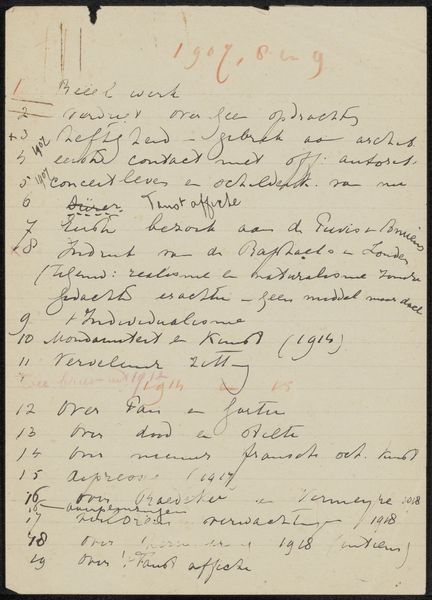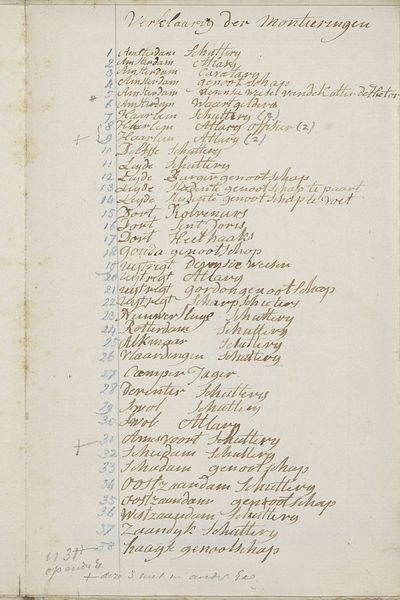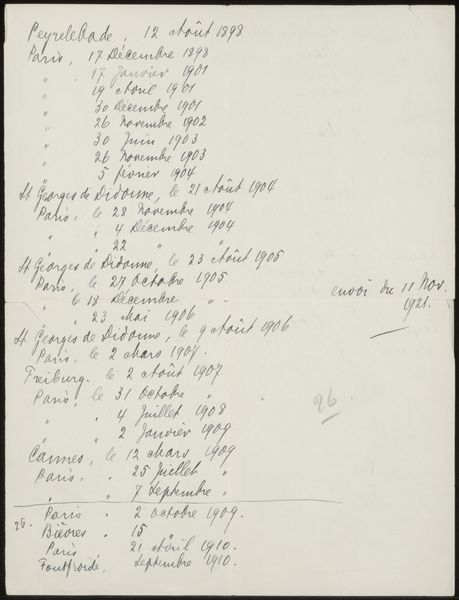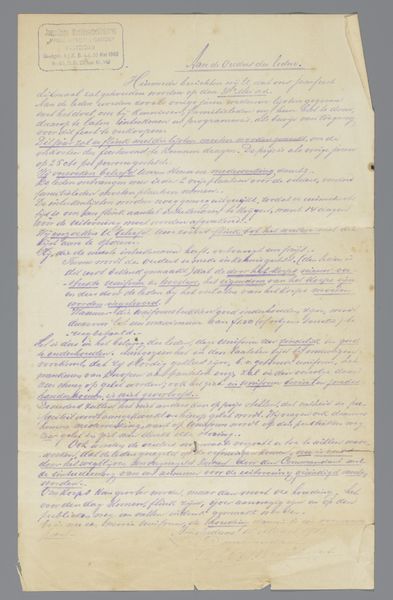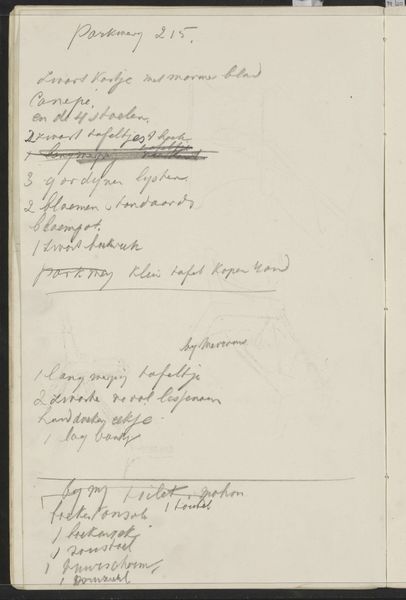
drawing, graphic-art, paper, ink
#
drawing
#
graphic-art
#
type repetition
#
typeface
#
sketch book
#
hand drawn type
#
paper
#
personal sketchbook
#
ink
#
hand-drawn typeface
#
journal
#
script
#
sketchbook drawing
#
sketchbook art
Copyright: Rijks Museum: Open Domain
Editor: So, this is "List of Woodcuts" by Bernard Essers, created sometime between 1903 and 1945, done in ink on paper. It reminds me of a personal journal, like a peek into the artist's mind. What do you see in it? Curator: The script itself holds a significant cultural weight, doesn't it? Notice how each word is carefully rendered; these aren't just entries, they are visual symbols tied to a cultural memory. Think about the tradition of illuminated manuscripts, where writing was elevated to art. Editor: That’s a great point, I didn’t think about that tradition. So, are these titles acting as miniature icons themselves? Curator: Precisely! Consider the repetition of form, how the list format echoes rituals or incantations. Each title a potential portal to the artist’s process and perhaps broader societal themes reflected in those woodcuts. How might psychological readings of script analysis further reveal the artist's intent? Editor: That's fascinating. It makes you think about what these woodcuts represented to Essers and maybe what he was hoping to capture from them. It’s more than just a shopping list, I now see it as a glimpse of the past but with emotional relevance for viewers today. Curator: Exactly, visual literacy helps us decode how imagery speaks across generations. And isn't it amazing how something as simple as a list can trigger such profound reflections on culture, memory, and self?
Comments
No comments
Be the first to comment and join the conversation on the ultimate creative platform.
